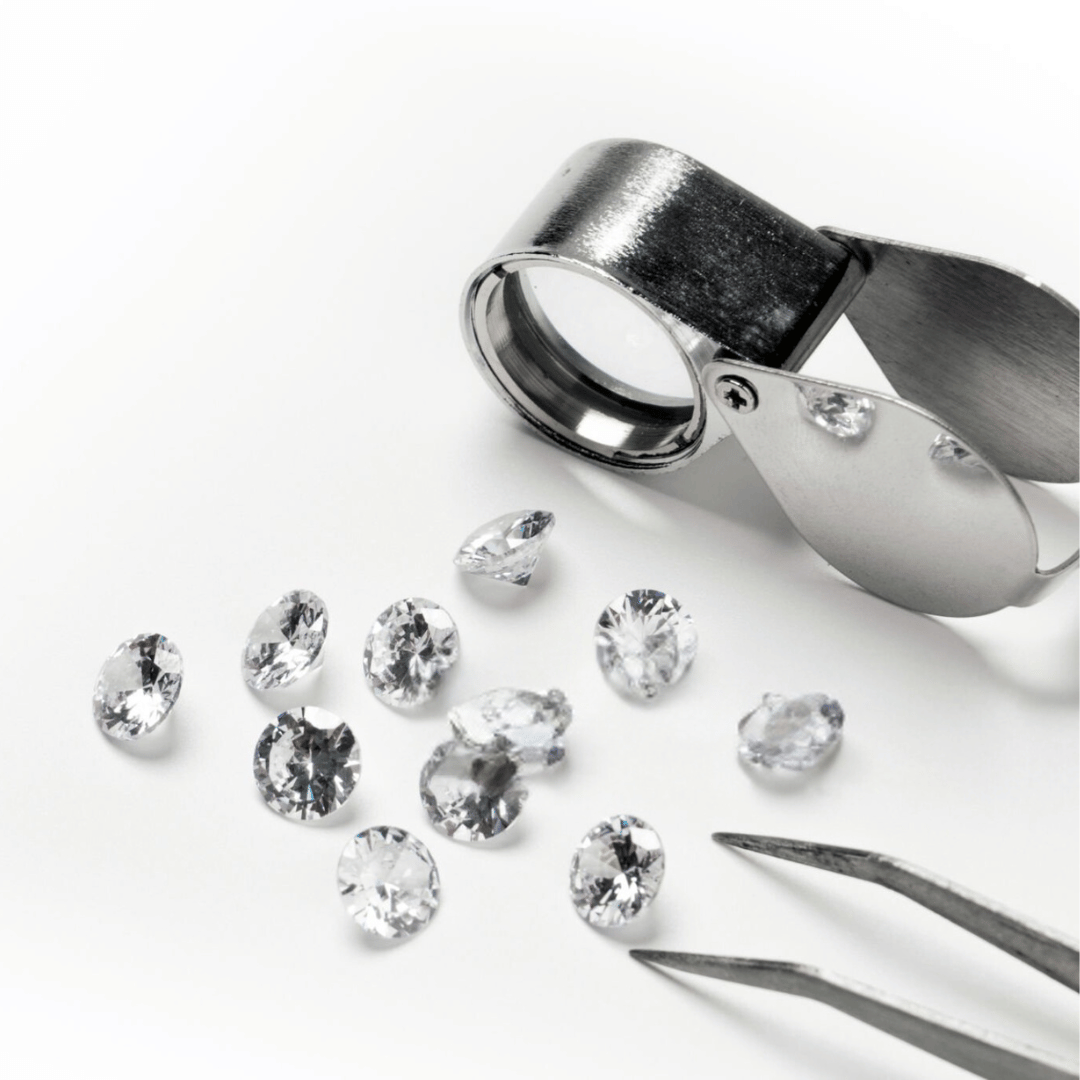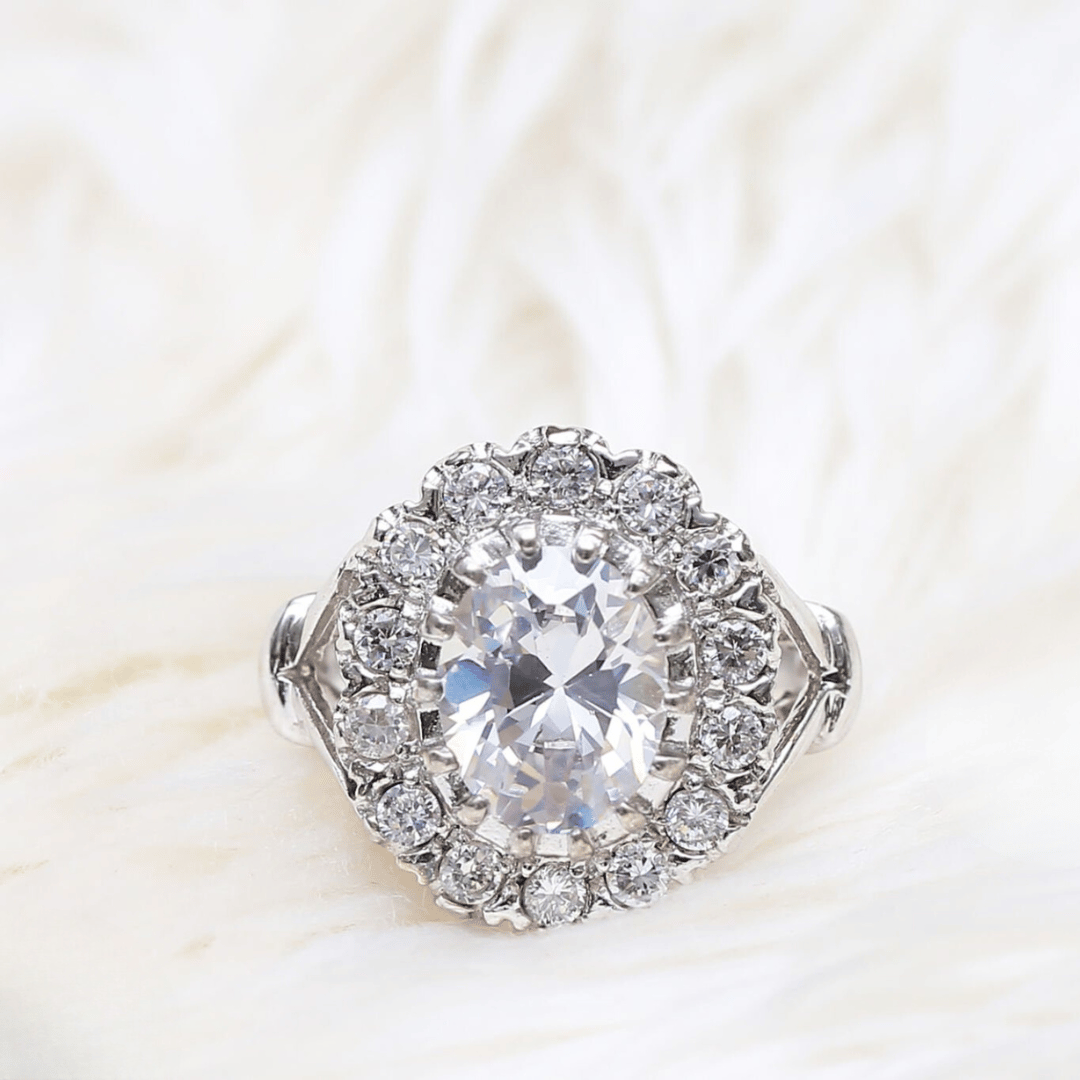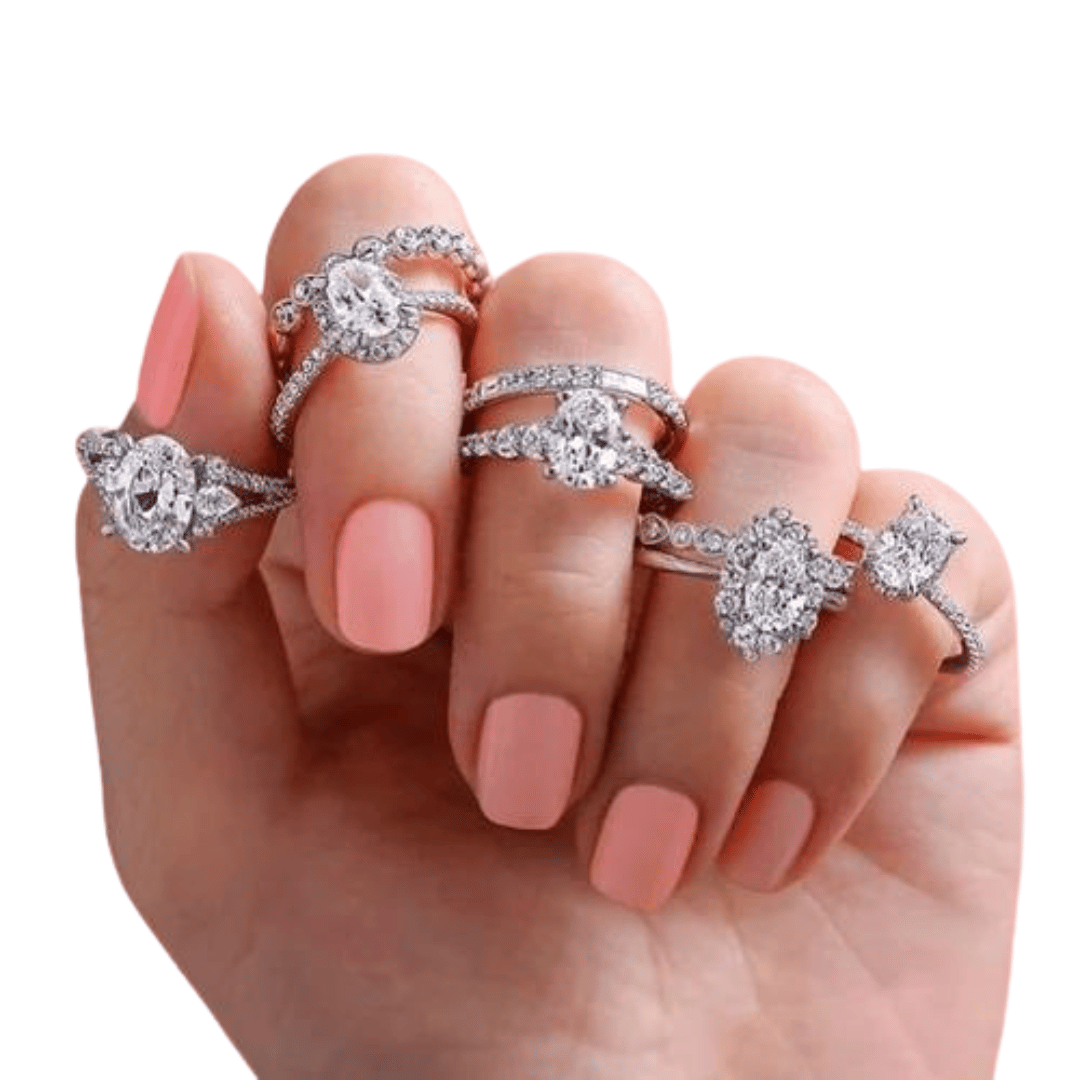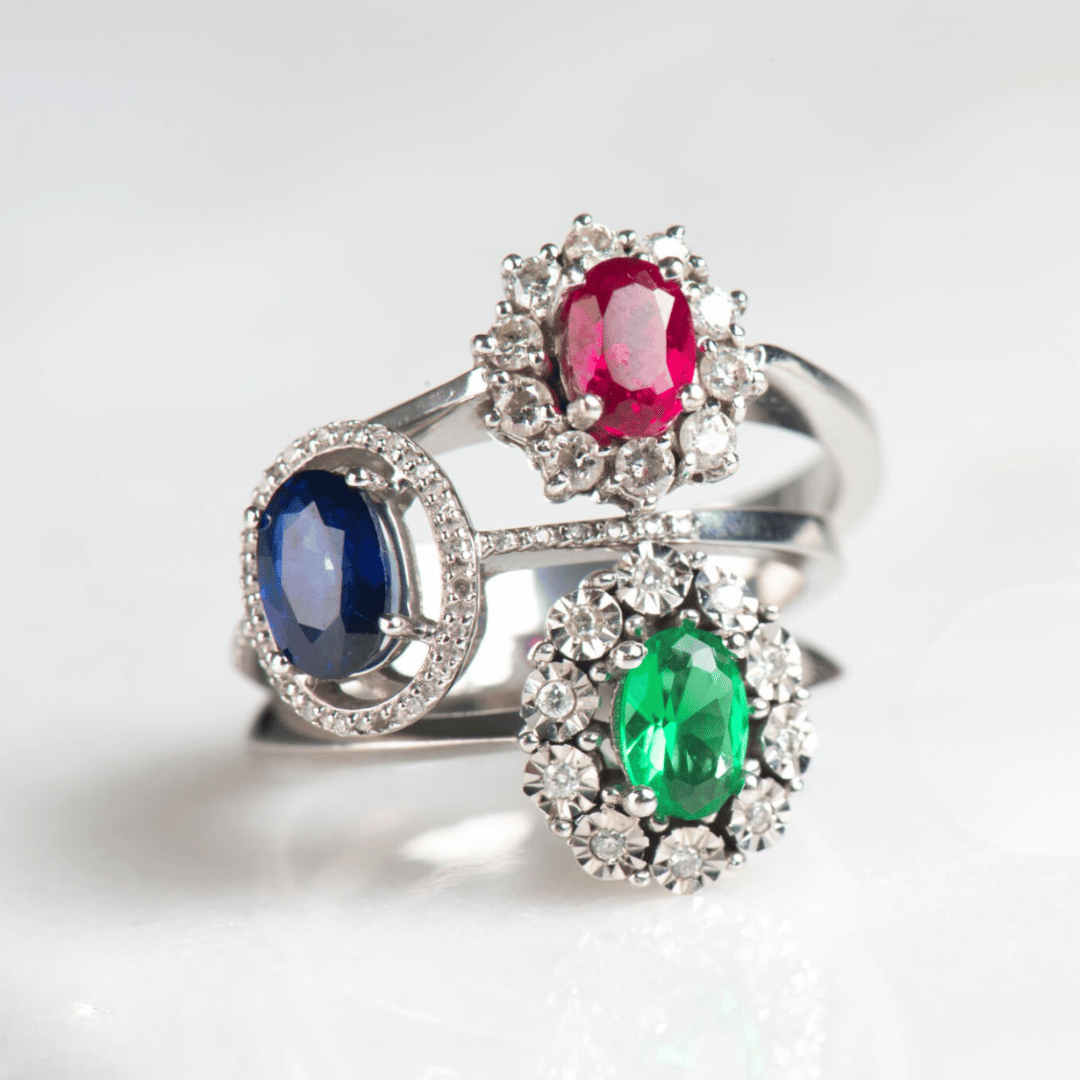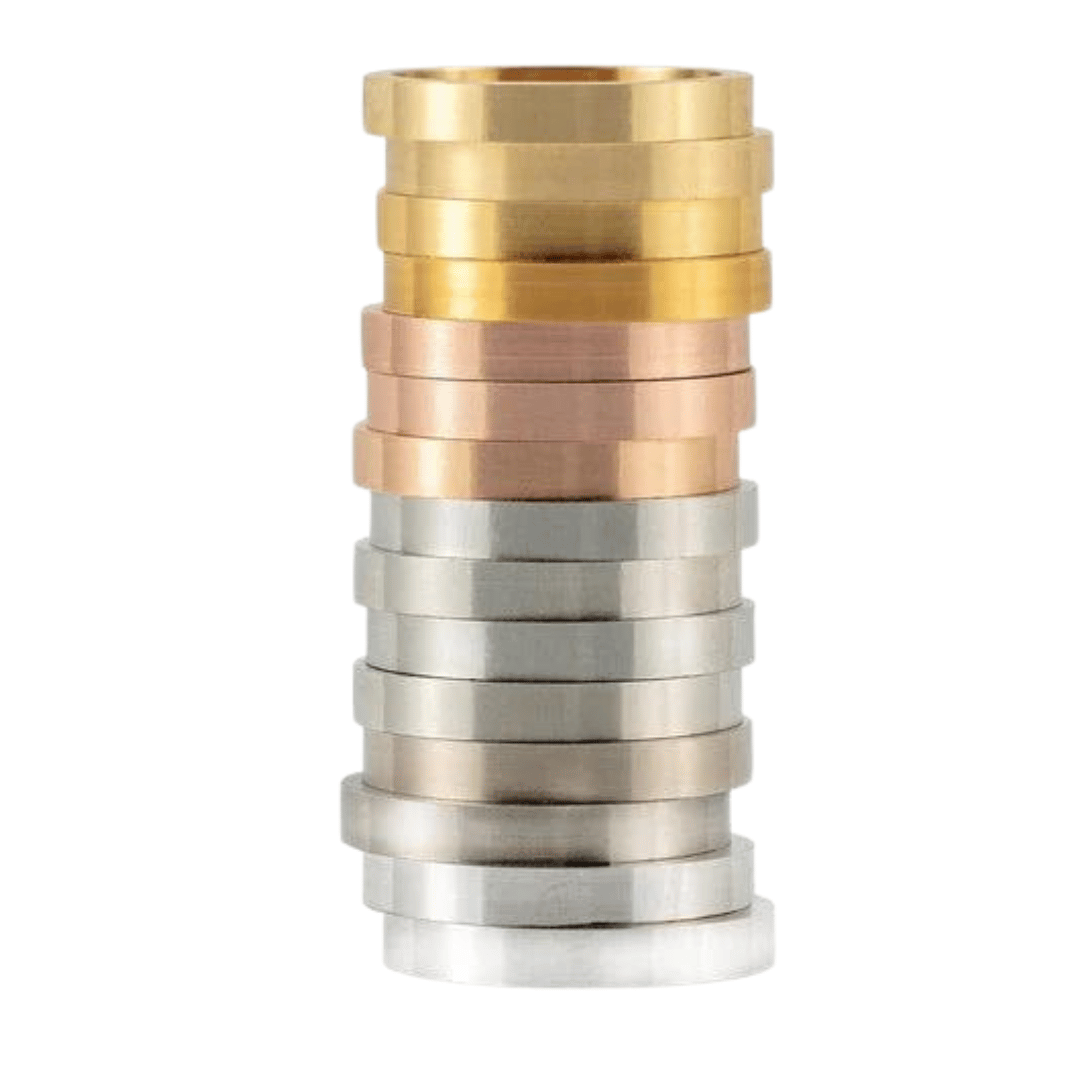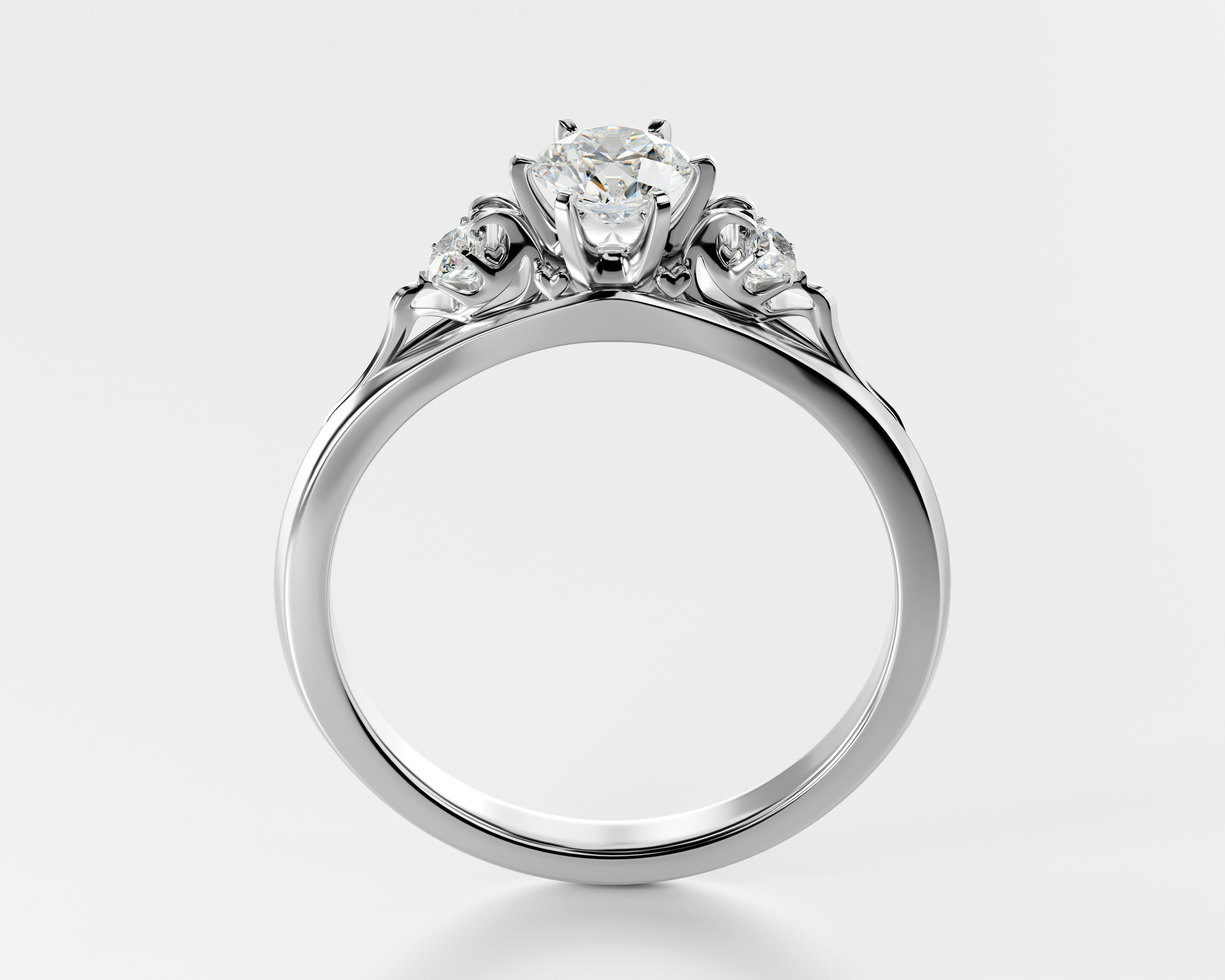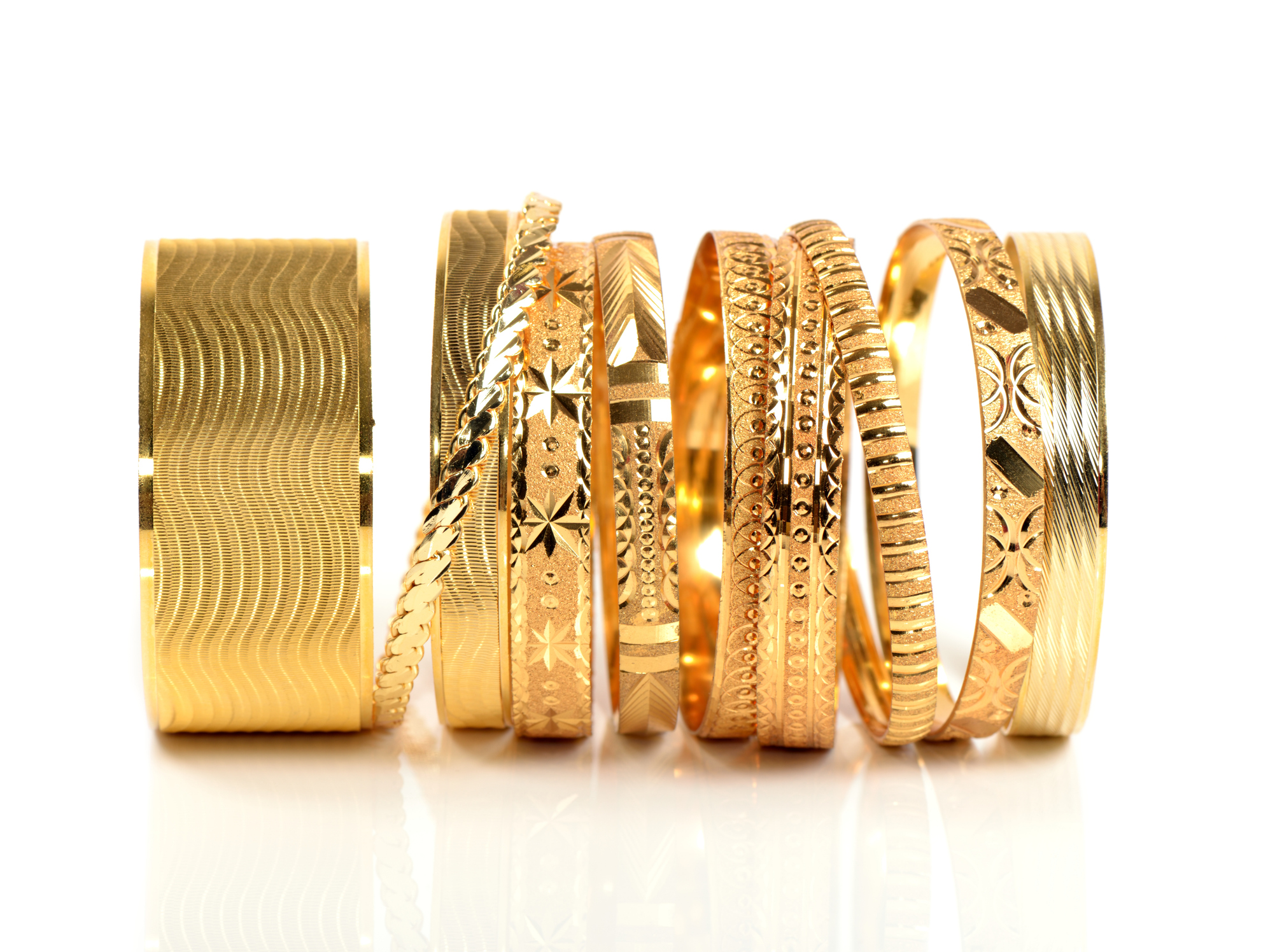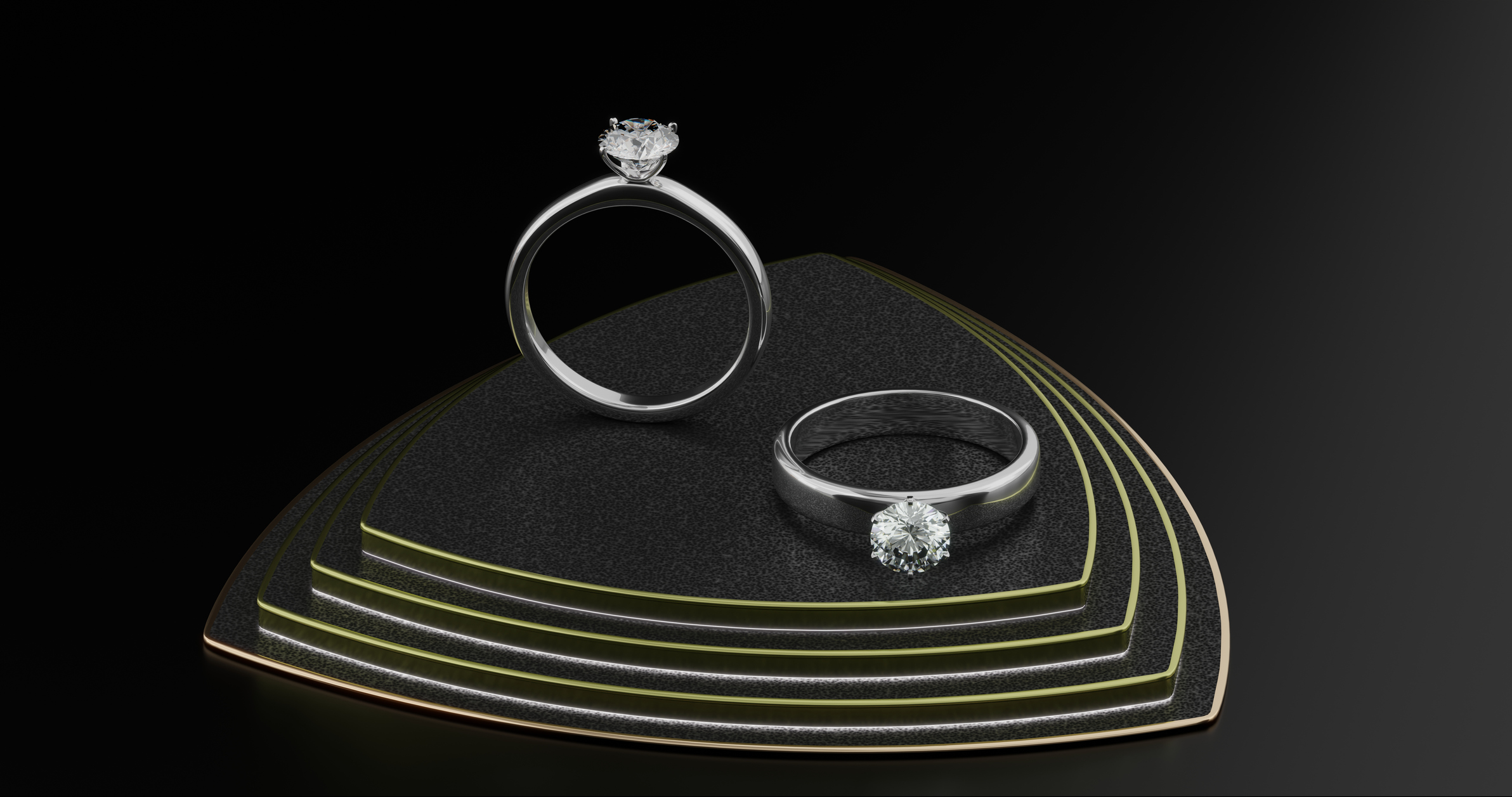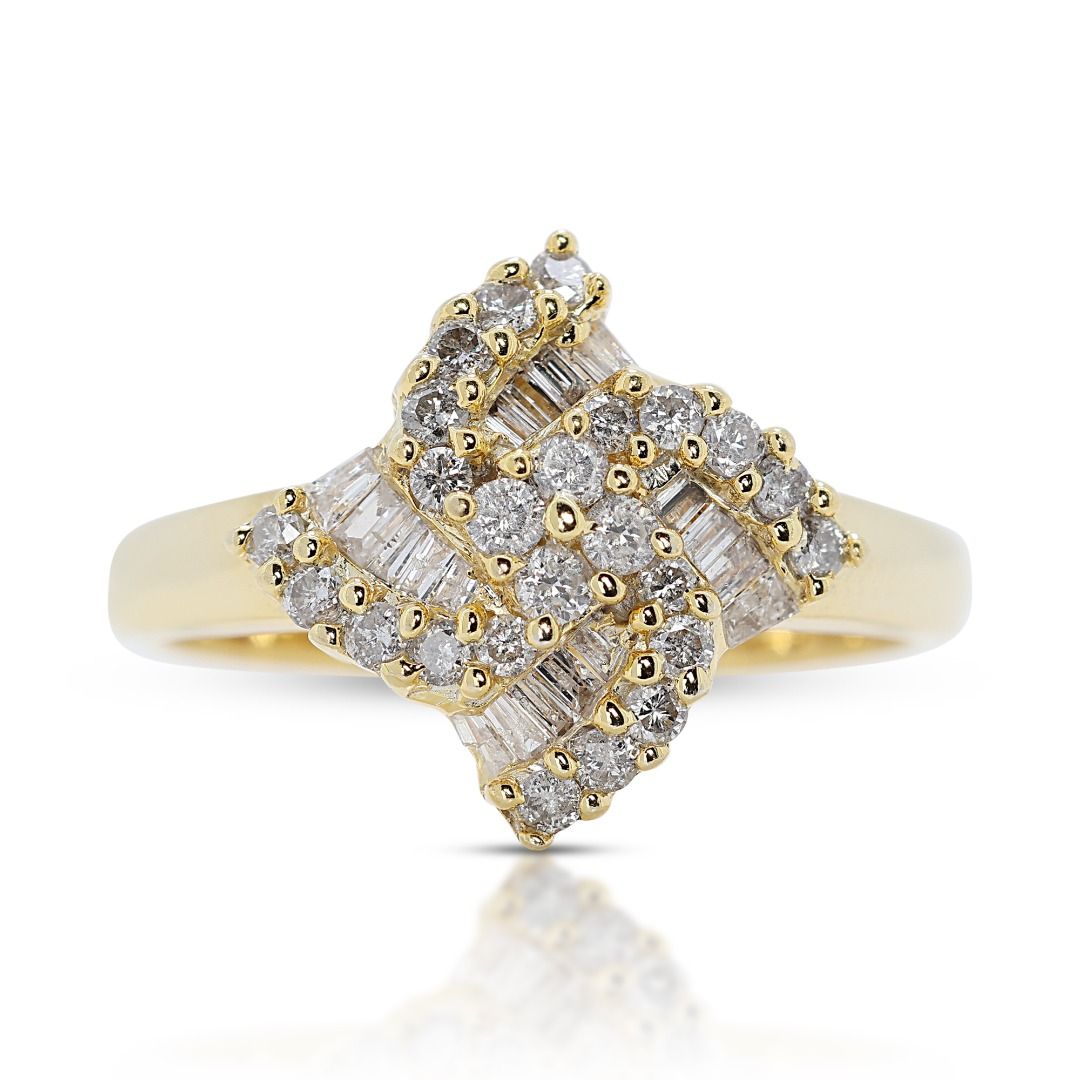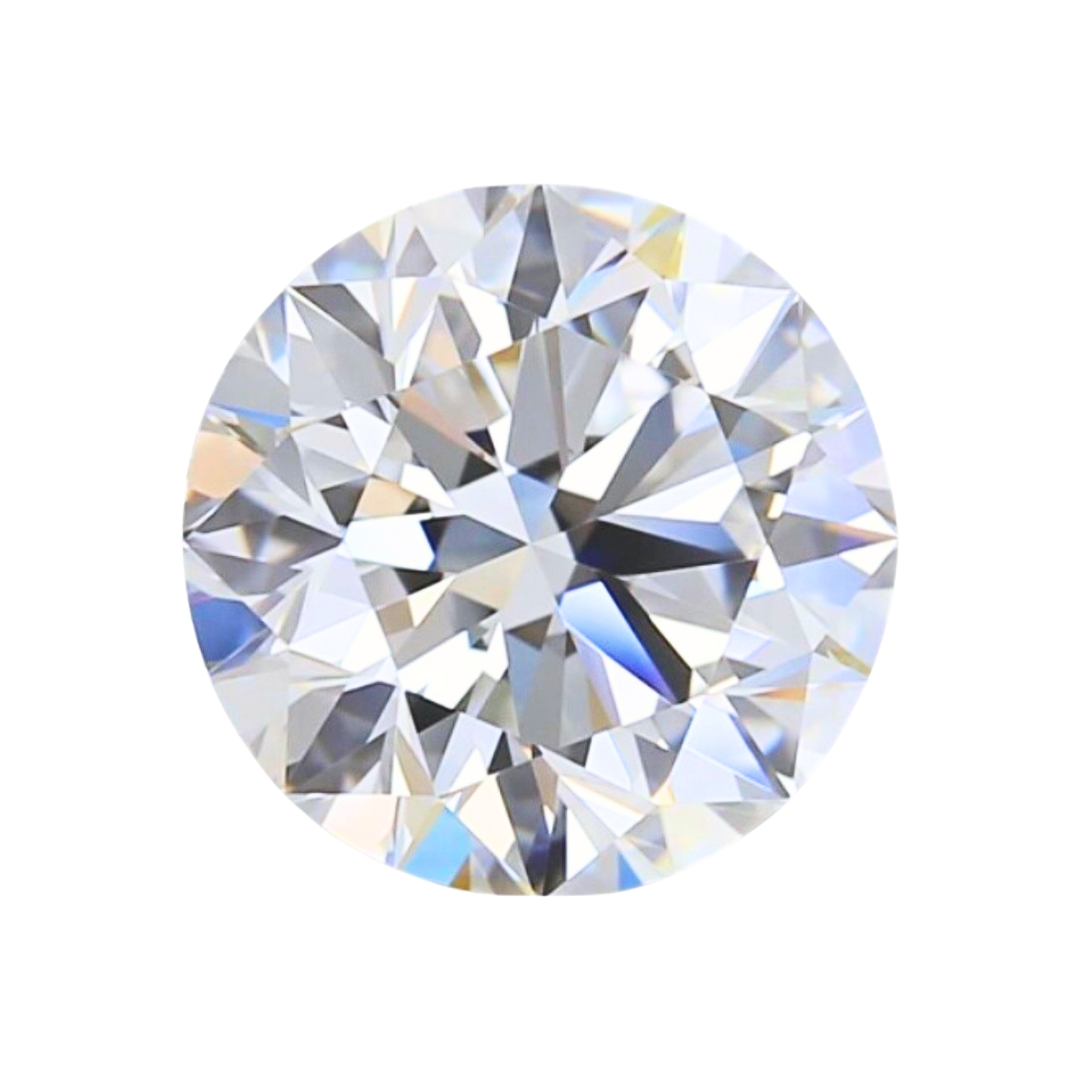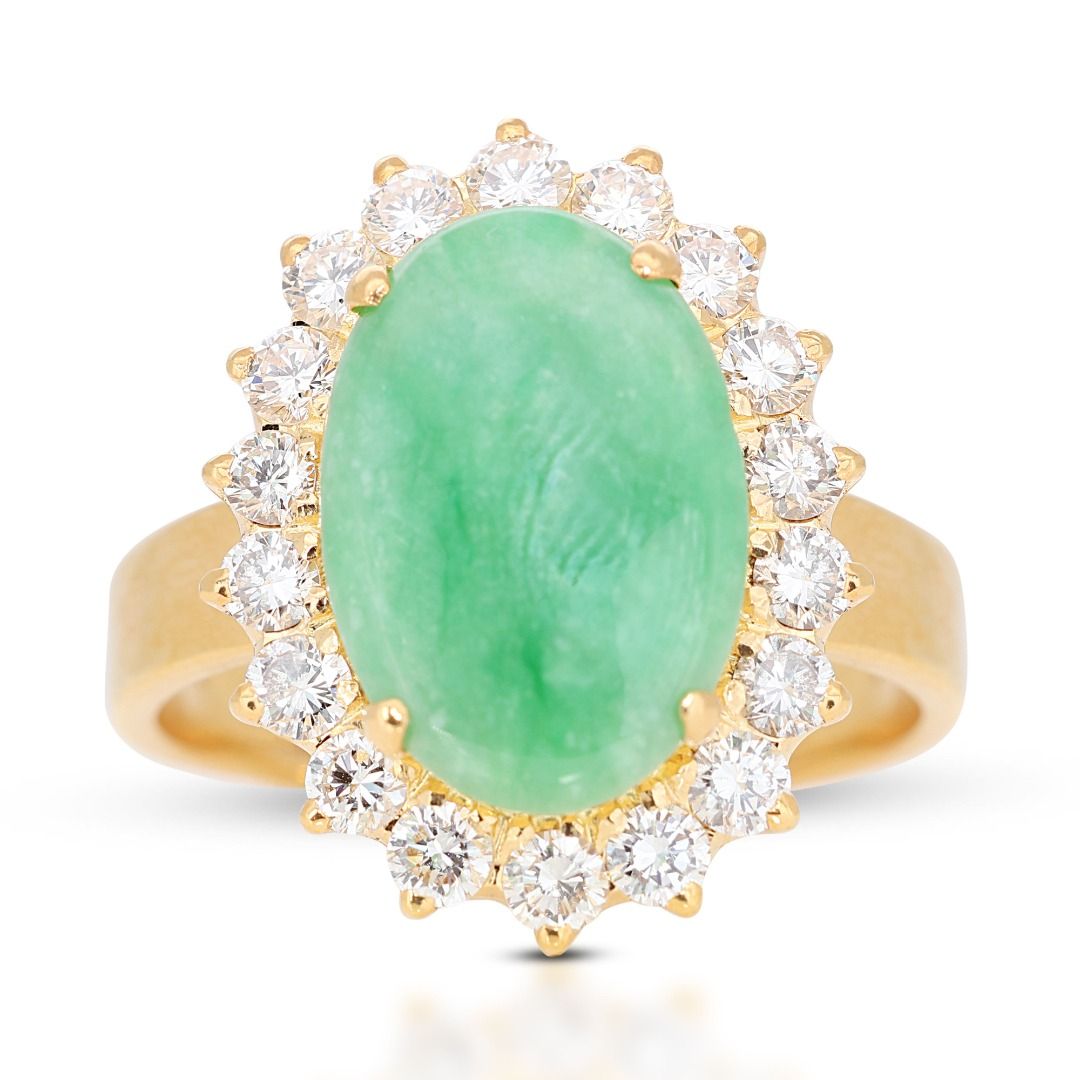How To Tell Good Diamonds from Bad
How To Tell Good Diamonds From Bad
Key Highlights:
- The 4 Cs Explained: Cut, Colour, Clarity, and Carat Weight are the cornerstones of diamond quality. This guide dives deep into Cut, the most critical factor for brilliance.
- Cut: Beyond Measurements: Unlike the other Cs, cut is a complex concept. Learn how a diamond’s proportions and facet arrangement affect light performance and sparkle.
- Shape vs. Cut: Don’t confuse shape (round, princess, etc.) with cut (facet arrangement). A well-cut diamond of any shape will sparkle more than a poorly cut one.
- Ideal Cut: Not Always Achievable: Gemologists define “ideal” cut proportions, but not all diamonds can be ideally cut due to natural variations. “Near ideal” cuts and patented cuts like Tolkowsky offer excellent sparkle.
- Light and Brilliance: A well-cut diamond maximizes light refraction and dispersion, creating a dazzling display of fire and brilliance. A poorly cut diamond might just reflect light, appearing dull.
- Deceptive Lighting: Beware of jewellers using strong lights to enhance poorly cut diamonds. Always examine diamonds in natural light.
- Finding the Best in Dim Light: Surprisingly, a poorly lit environment can reveal a well-cut diamond’s superior light play. Only the best-cut stones will continue to sparkle in dim light.
- The Naked Eye Test: You don’t need to be a gemologist! A simple side-by-side comparison can help you identify the more brilliant diamond.
Diamonds have long been cherished as timeless symbols of love and commitment, embodying a profound emotional connection and serving as a lasting testament to significant moments in our lives. However, the process of selecting the perfect diamond can be daunting, given the myriad factors to consider—from carat weight and color to clarity and setting. Among these, the cut of the diamond is perhaps the most crucial element, influencing not just the gem’s overall beauty but its brilliance and sparkle as well.
A diamond’s cut determines how light interacts with the stone, affecting its ability to dazzle and capture the eye. The cut encompasses the diamond’s proportions, symmetry, and polish, all of which play a role in how light is reflected and refracted within the gem. Understanding the nuances of the cut can help you appreciate why some diamonds seem to glow with extraordinary brilliance while others appear less vibrant.
This guide is designed to demystify the complexities of diamond cuts, offering insights into what makes a diamond truly brilliant. By focusing on this essential aspect, we aim to simplify your decision-making process and help you select a diamond that not only meets your expectations but also embodies the timeless elegance and sparkle you desire.

1. The 4 Cs: Cornerstone of Diamond Quality
You might already be familiar with the 4 Cs – Cut, Colour, Clarity, and Carat Weight – which define a diamond’s value. This article delves deeper into the most critical C: Cut.
2. Cut: Beyond the Obvious
Unlike Colour, Clarity, and Carat Weight, which are readily measured, cut is a more nuanced concept. While a trained eye can spot a poorly cut diamond, there are ways for even first-time buyers to make informed decisions.
3. Shape vs. Cut: Understanding the Distinction
A diamond’s shape – round, princess, or heart – is its basic outline. Cut, however, refers to the proportions and arrangement of its facets, which influence how light interacts with the stone, creating brilliance. The same popular round shape can have varying cut grades, ranging from excellent to poor. A well-cut diamond will sparkle magnificently, even with a lower colour or clarity grade.
4. The Anatomy of a Diamond
-
- Table: The flat top facet.
- Culet: The pointed bottom facet.
- Girdle: The narrow band separating the crown (upper part) from the pavilion (lower part).
- Facets: The flat, polished surfaces that reflect light.


5. Cut Quality and Light Performance
A well-cut diamond with optimal proportions will be far more sparkly than a poorly cut one, even if the other Cs are identical. Light entering a well-cut diamond refracts (bends) and disperses (separates into colours) within the stone, creating a dazzling display of fire and brilliance. A poorly cut diamond might simply reflect light, like a piece of glass. This brilliance diminishes as the diamond gets dirty during everyday wear, but a well-cut diamond will retain its sparkle.
6. Ideal Cut: A Myth or a Must?
Gemologists define “ideal cut” proportions that maximise a diamond’s brilliance. However, not all diamonds can be ideally cut due to natural variations. Many diamonds achieve a “near ideal” cut, offering excellent sparkle and fire. Additionally, various patented cuts like the Tolkowsky cut or Hearts and Arrows produce stunning results.
7. Why Poor Cuts Exist
Sometimes, diamond cutters prioritise preserving more of the rough stone to achieve a higher carat weight. A 1 carat diamond commands a higher price than a 0.90 carat stone. This can lead to sacrificing ideal proportions for extra weight.
8. Reflection, Refraction, and Dispersion: The Key Players
-
-
- Reflection: Light bouncing off the diamond’s surface.
- Refraction: Light entering the diamond and bending within.
- Dispersion: Light separating into colours as it exits the diamond.
-
A well-cut diamond will maximise refraction and dispersion, resulting in a dazzling display of brilliance and fire. A poorly cut diamond might just reflect light, appearing dull when dirty. This is why poorly cut diamonds are better suited for pendants or earrings, which experience less contact and grime buildup.


9. Avoiding Deceptive Lighting
Some jewellers use bright, directional lighting to make poorly cut diamonds appear more sparkly. However, this brilliance disappears in natural light. Always examine diamonds in natural light, away from display cases and strong lighting.
10. Finding the Best Diamonds in Dim Light
Believe it or not, a poorly lit environment can help you identify a well-cut diamond. Take the stone away from bright lights and examine it in a poorly lit room or hallway. In such conditions, only the best-cut diamonds will continue to sparkle due to their superior light refraction and dispersion.
11. Identifying a Poorly Cut Diamond
A smaller, well-cut diamond might outshine a larger, shallow-cut diamond because light disperses from the sides rather than the top. Similarly, a deep cut diamond won’t direct light to the viewer’s eye as effectively as an ideal cut. Over centuries, diamond cutters have perfected the art of creating ideal proportions for optimal light performance.
12. The Naked Eye vs. Technical Specs
Most consumers, and even some jewellers, might not understand the intricacies of cut ratios. Don’t worry! Here’s a simple method to compare two diamonds:
- Hold both diamonds side-by-side and examine them from various angles, including directly through the table (flat top).
- If you’re still unsure, follow these four steps:
- Inspect both stones for blemishes, scratches, or chips using a loupe (magnifying glass).

Conclusion
While choosing a diamond can feel overwhelming, focusing on cut – the secret to brilliance – empowers you to make a confident decision. Unlike the other Cs (Colour, Clarity, Carat Weight), cut deals with a diamond’s proportions and how light interacts with it, creating sparkle. Even a smaller, well-cut diamond will outshine a larger, poorly cut one. Remember, natural light is your friend – avoid being swayed by bright jewellery displays. Don’t worry about technical jargon; a simple side-by-side comparison will reveal the more dazzling diamond. By prioritizing cut, you’ll select a diamond that truly explodes with brilliance, a timeless symbol of your love.


